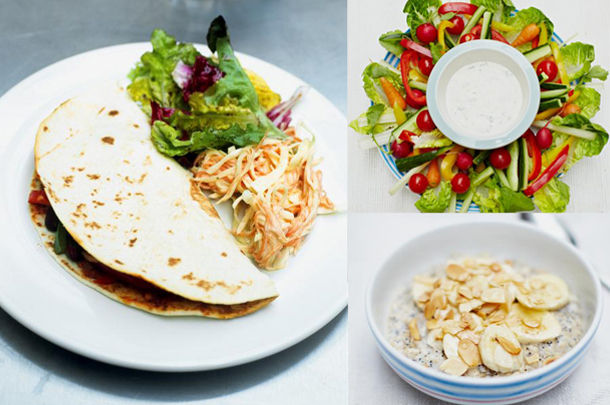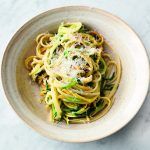There is nothing more important than our children’s health, and you can’t underestimate the importance of nutrition as part of that. Making sure kids eat well and have a strong relationship with food won’t just keep them healthy when they’re young; it will instil in them the right habits for later in life.
I know just how hard it can be to put the right kind of food on the table, let alone make the kids eat it, but these five top tips will help improve your children’s health in a flash.
Do breakfast right
Breakfast is such an important meal for people of any age, but for children it’s even more vital to give them the energy to concentrate at school and keep them going through to lunchtime. According to Kellogg’s, 1 in 7 children leave the house on an empty stomach, which can have a negative effect on their behaviour.
All too often I see children walking to school eating foods of poor nutritional value, such as crisps and chocolate, which means they’ll be hungry again within a short time as their blood sugar levels rapidly rise and fall. Those early years are the time to set good habits in your children, such as seeing breakfast as a way of life rather than a chore.
If you struggle to find the time in the morning, a piece of fruit and a slice of wholemeal toast is better than nothing to send kids out the door with. There are lots of simple, healthy toppings you can use – some mashed or sliced banana, a thin layer of peanut butter, or a little jam (no more than a teaspoon) are some great ways to top toast. Toasted fruit bread is also a lovely way to mix toast up too, and if you’ve got time, a boiled egg with soldiers is fun for kids and full of good stuff.
Porridge makes for a good weekend breakfast, when you’ve got more time on your hands to really embrace this meal with all the family around the table. Thankfully, Jamie’s porridge recipes are delicious, but I remember my mum trying to get me to eat plain porridge on cold winter mornings before school and it was never very appetising (sorry Mum!).
Don’t supersize or over-season
Children don’t need to eat as much food as adults, so don’t load up their plates at meal times with the same quantity of food as yours. Up to the age of six, children shouldn’t have more than 1,500 calories per day, and up to the age of ten no more than 1,800 calories. Take this into consideration when dishing up meals, as this could be around a third of what you eat in a day.
However, children do still need their five a day of fruits and vegetables though, so don’t scrimp on servings of these! It’s not as hard as it sounds – it’s easy to forget that beans and pulses count too, and Jamie’s recipe for Mexican bean wraps are sure to be a hit!
Kids don’t need as much salt in their diet either, so try not to season their food during cooking because they’re probably already getting the 4g of salt they need through pre-prepared foods.
Take kids shopping and read labels
Next time you’re food shopping and you’re not in a hurry, try to spend some time teaching your children about the foods going into your trolley. This way they can understand more of where ingredients come from and how they can be used in cooking. Fruit and vegetables are a good place to start, as there are so many different types and varieties.
Food labels are important because they tell us exactly what is in the food we are eating. By looking at the amount of calories, fat, sugar and salt that’s contained in food, decisions about the food you choose for you and your family will be easier
Get kids cooking
I’m not talking about collaborating on a gastronomic masterpiece; just basic, fun recipes that will arm your children for life, such as fresh pizza or pancakes. These will get your children familiar with ingredients, so they can recognise them and understand where and when they may be used.
Getting kids to prepare and weigh out ingredients, use basic kitchen equipment and try different cooking techniques, will help them develop the cooking skills they will need for adulthood and their own future family. It may even help to eliminate fussiness in your household – if you struggle to get them to try new dishes, slowly introduce ingredients so they become more familiar with them. Jamie’s minty yoghurt dip is a classic example of how to get your kids to try some veggies and “eat the rainbow”, providing lots of brightly-coloured food to tempt them.
Get them active
My last top tip for helping kids to leading a healthy lifestyle isn’t food related, but absolutely essential for good health. The government recommend 1 hour of moderate exercise every day for those under 18 years.
For many children, if they don’t find a sport they enjoy when they’re young, they may become sedentary in later life. It’s a case of finding something they enjoy, so they keep at it regularly and it becomes a part of their lifestyle, whether it’s cycling to school, running or swimming.
I can’t emphasise enough the importance of setting up the good habits of a balanced diet and an active lifestyle early on in life – both are vital to good health and wellbeing in the present and future.























